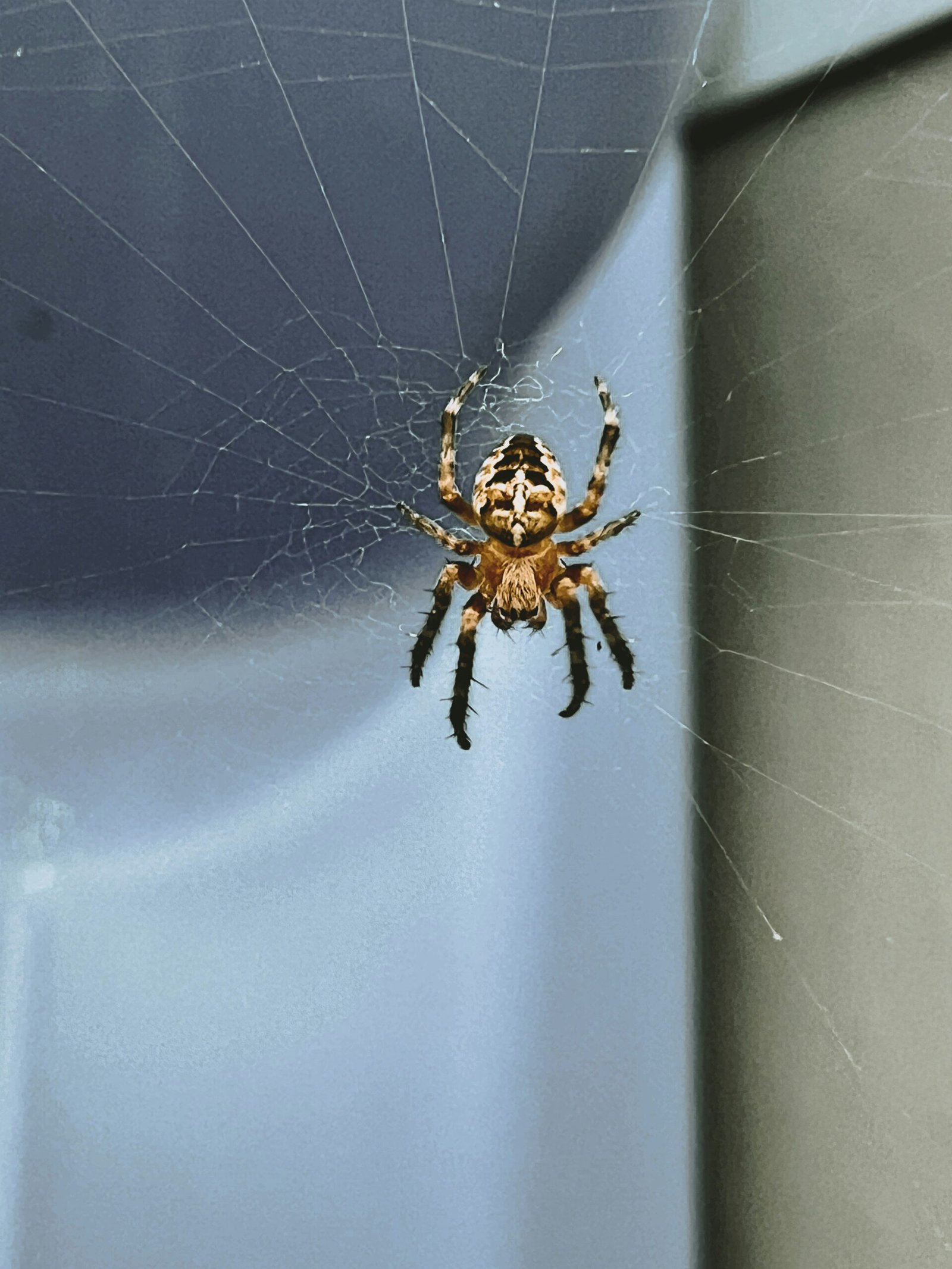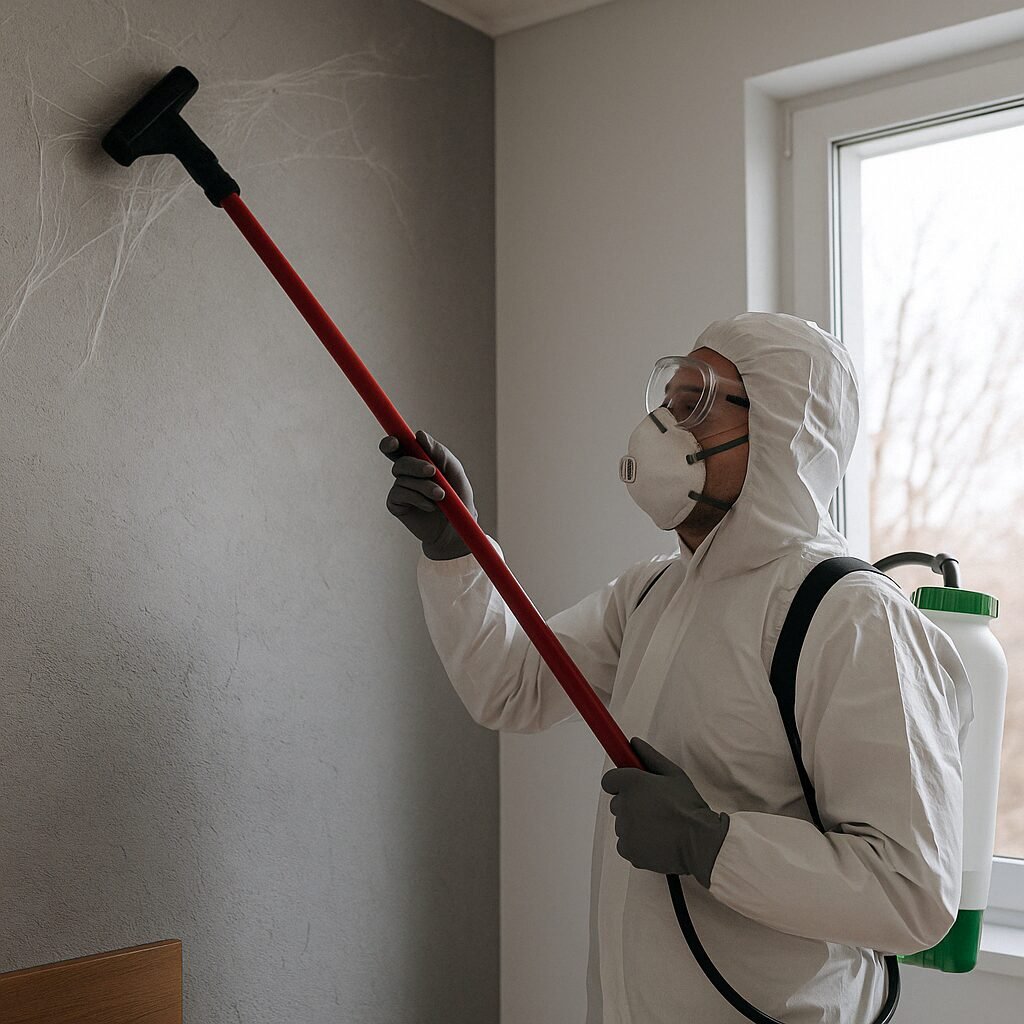Dealing with unwanted spiders? Touchdown Pest Control provides expert spider control Los Angeles services. Whether it’s black widows, brown recluse spiders, or common household species, our licensed team ensures safe spider removal and long-term prevention. Call the best exterminator for spiders today.
Spiders are among the most common pests found in Los Angeles homes and businesses. While many species are harmless, some pose health risks due to venomous bites. If you notice webs, egg sacs, or frequent spider sightings, it’s time to contact a professional for spider control in Los Angeles.
DIY sprays may provide short relief but fail to remove hidden nests. Our targeted treatments, exclusion methods, and prevention strategies ensure spiders are eliminated for good.
Have spiders taken over your home or garage? Our professional spider removal services are safe, effective, and designed for long-term protection. Call now to schedule an inspection.
Spiders often enter homes through cracks, gaps, and poorly sealed windows and doors. To reduce the likelihood of an infestation, inspect the outside of your property and seal any visible entry points. Keeping your home tidy and clutter-free—especially in attics, basements, and garages—limits their hiding spaces and nesting spots.
Use a vacuum or broom to remove webs from ceilings, corners, and under furniture. Avoid stacking firewood or storing boxes close to the house, as these provide ideal environments for spiders. Outdoor lighting also attracts insects, which in turn attracts spiders. Use yellow or sodium vapor lights to reduce insect activity around doors and windows.



Spiders invade both residential and commercial properties across Los Angeles. Our spider control Los Angeles team uses safe, proven techniques to eliminate infestations and prevent new ones. We combine chemical and non-chemical methods for long-lasting results.
Spiders have eight legs and two body segments: the cephalothorax and abdomen. Unlike insects, they lack wings and antennae. While many spiders help control insect populations, some species should be addressed immediately. The presence of multiple webs, shed skins, or egg sacs may signal an infestation.
Spiders prefer dark, quiet places with minimal disturbance. Common hiding spots include basements, crawl spaces, garages, attics, behind furniture, and inside closets. Outdoors, spiders are often found in woodpiles, under debris, or in sheds. They spin webs in corners, around windows, or under eaves, waiting to catch passing insects. Eliminating these hiding places is key to long-term spider prevention.
Look for these indicators of spider presence:
Female spiders can lay dozens to hundreds of eggs, often stored in silk egg sacs. Once hatched, spiderlings quickly disperse through ballooning or crawling, establishing new hiding places. Without intervention, spider populations can grow rapidly—especially in undisturbed, cluttered spaces.
Over-the-counter sprays often miss hidden spiders and egg sacs. Our professional team ensures:
Reduce the chances of spiders returning by:
If you notice multiple spiders, webs, or signs of an infestation, don’t wait. Quick action reduces health risks and prevents larger infestations. Touchdown Pest Control provides expert spider inspections, treatment, and prevention to protect your home year-round.
Signs of a spider infestation include visible webs in corners, ceilings, or windows, spotting multiple spiders, finding egg sacs, noticing small black specks (spider droppings), and experiencing unexplained bites. Early action helps prevent larger infestations.
Spiders prefer dark, undisturbed areas such as basements, attics, garages, closets, behind furniture, and inside sheds or woodpiles. They also spin webs around windows, under eaves, and in corners to trap insects.
While most spiders are harmless and even beneficial by controlling insects, species like black widows and brown recluses can deliver venomous bites that pose health risks. Professional spider identification and removal ensure safety.
Seal cracks, keep your home clean and clutter-free, reduce outdoor lighting at night, use screens on windows/doors, and remove webs regularly.
Professionals ensure full elimination, including hidden nests. For best results, trust the best exterminator for spiders in Los Angeles.
Anaheim – Anaheim Hills – Corona – Covina – Eastvale – Fontana – Fullerton – Glendora – Irvine – Long Beach – Los Angeles – Monrovia – Moreno Valley – Norco – Ontario – Orange – Orange County – Pasadena – Reseda – Riverside – Santa Ana – Van Nuys – Whittier – Woodland Hills
Touchdown Pest Control
We firmly believe that the internet should be available and accessible to anyone, and are committed to providing a website that is accessible to the widest possible audience, regardless of circumstance and ability.
To fulfill this, we aim to adhere as strictly as possible to the World Wide Web Consortium’s (W3C) Web Content Accessibility Guidelines 2.1 (WCAG 2.1) at the AA level. These guidelines explain how to make web content accessible to people with a wide array of disabilities. Complying with those guidelines helps us ensure that the website is accessible to all people: blind people, people with motor impairments, visual impairment, cognitive disabilities, and more.
This website utilizes various technologies that are meant to make it as accessible as possible at all times. We utilize an accessibility interface that allows persons with specific disabilities to adjust the website’s UI (user interface) and design it to their personal needs.
Additionally, the website utilizes an AI-based application that runs in the background and optimizes its accessibility level constantly. This application remediates the website’s HTML, adapts Its functionality and behavior for screen-readers used by the blind users, and for keyboard functions used by individuals with motor impairments.
If you’ve found a malfunction or have ideas for improvement, we’ll be happy to hear from you. You can reach out to the website’s operators by using the following email
Our website implements the ARIA attributes (Accessible Rich Internet Applications) technique, alongside various different behavioral changes, to ensure blind users visiting with screen-readers are able to read, comprehend, and enjoy the website’s functions. As soon as a user with a screen-reader enters your site, they immediately receive a prompt to enter the Screen-Reader Profile so they can browse and operate your site effectively. Here’s how our website covers some of the most important screen-reader requirements, alongside console screenshots of code examples:
Screen-reader optimization: we run a background process that learns the website’s components from top to bottom, to ensure ongoing compliance even when updating the website. In this process, we provide screen-readers with meaningful data using the ARIA set of attributes. For example, we provide accurate form labels; descriptions for actionable icons (social media icons, search icons, cart icons, etc.); validation guidance for form inputs; element roles such as buttons, menus, modal dialogues (popups), and others. Additionally, the background process scans all the website’s images and provides an accurate and meaningful image-object-recognition-based description as an ALT (alternate text) tag for images that are not described. It will also extract texts that are embedded within the image, using an OCR (optical character recognition) technology. To turn on screen-reader adjustments at any time, users need only to press the Alt+1 keyboard combination. Screen-reader users also get automatic announcements to turn the Screen-reader mode on as soon as they enter the website.
These adjustments are compatible with all popular screen readers, including JAWS and NVDA.
Keyboard navigation optimization: The background process also adjusts the website’s HTML, and adds various behaviors using JavaScript code to make the website operable by the keyboard. This includes the ability to navigate the website using the Tab and Shift+Tab keys, operate dropdowns with the arrow keys, close them with Esc, trigger buttons and links using the Enter key, navigate between radio and checkbox elements using the arrow keys, and fill them in with the Spacebar or Enter key.Additionally, keyboard users will find quick-navigation and content-skip menus, available at any time by clicking Alt+1, or as the first elements of the site while navigating with the keyboard. The background process also handles triggered popups by moving the keyboard focus towards them as soon as they appear, and not allow the focus drift outside it.
Users can also use shortcuts such as “M” (menus), “H” (headings), “F” (forms), “B” (buttons), and “G” (graphics) to jump to specific elements.
We aim to support the widest array of browsers and assistive technologies as possible, so our users can choose the best fitting tools for them, with as few limitations as possible. Therefore, we have worked very hard to be able to support all major systems that comprise over 95% of the user market share including Google Chrome, Mozilla Firefox, Apple Safari, Opera and Microsoft Edge, JAWS and NVDA (screen readers).
Despite our very best efforts to allow anybody to adjust the website to their needs. There may still be pages or sections that are not fully accessible, are in the process of becoming accessible, or are lacking an adequate technological solution to make them accessible. Still, we are continually improving our accessibility, adding, updating and improving its options and features, and developing and adopting new technologies. All this is meant to reach the optimal level of accessibility, following technological advancements. For any assistance, please reach out to